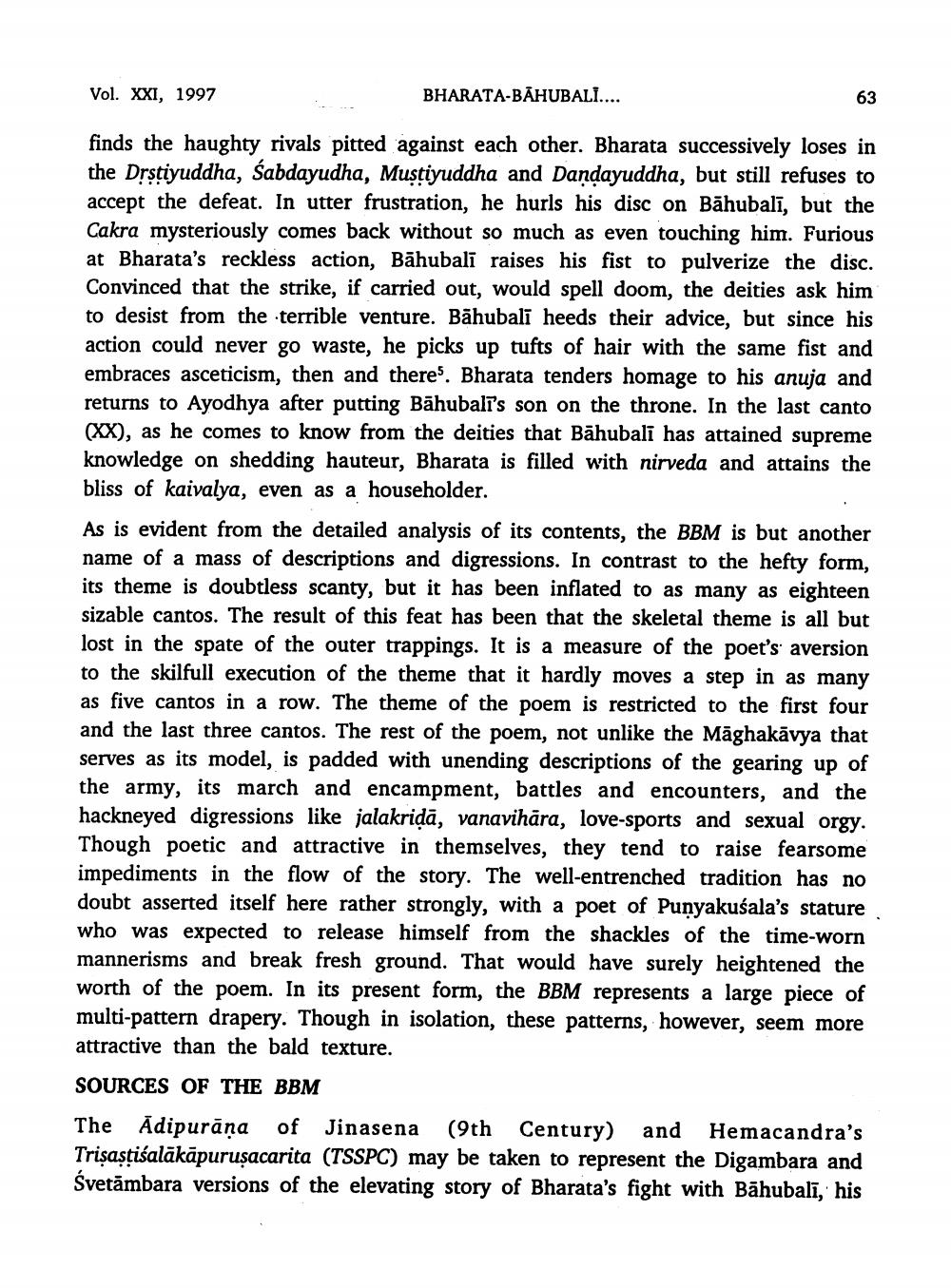________________
Vol. XXI, 1997
BHARATA-BAHUBALI....
63
finds the haughty rivals pitted against each other. Bharata successively loses in the Drstiyuddha, Śabdayudha, Mustiyuddha and Dandayuddha, but still refuses to accept the defeat. In utter frustration, he hurls his disc on Bahubalī, but the Cakra mysteriously comes back without so much as even touching him. Furious at Bharata's reckless action, Bahubali raises his fist to pulverize the disc. Convinced that the strike, if carried out, would spell doom, the deities ask him to desist from the terrible venture. Bahubali heeds their advice, but since his action could never go waste, he picks up tufts of hair with the same fist and embraces asceticism, then and theres. Bharata tenders homage to his anuja and returns to Ayodhya after putting Bahubali's son on the throne. In the last canto (XX), as he comes to know from the deities that Bahubali has attained supreme knowledge on shedding hauteur, Bharata is filled with nirveda and attains the bliss of kaivalya, even as a householder.
As is evident from the detailed analysis of its contents, the BBM is but another name of a mass of descriptions and digressions. In contrast to the hefty form, its theme is doubtless scanty, but it has been inflated to as many as eighteen sizable cantos. The result of this feat has been that the skeletal theme is all but lost in the spate of the outer trappings. It is a measure of the poet's aversion to the skilfull execution of the theme that it hardly moves a step in as many as five cantos in a row. The theme of the poem is restricted to the first four and the last three cantos. The rest of the poem, not unlike the Maghakāvya that serves as its model, is padded with unending descriptions of the gearing up of the army, its march and encampment, battles and encounters, and the hackneyed digressions like jalakriḍā, vanavihāra, love-sports and sexual orgy. Though poetic and attractive in themselves, they tend to raise fearsome impediments in the flow of the story. The well-entrenched tradition has no doubt asserted itself here rather strongly, with a poet of Punyakuśala's stature who was expected to release himself from the shackles of the time-worn mannerisms and break fresh ground. That would have surely heightened the worth of the poem. In its present form, the BBM represents a large piece of multi-pattern drapery. Though in isolation, these patterns, however, seem more attractive than the bald texture.
SOURCES OF THE BBM
The Adipurāṇa of Jinasena (9th Century) and Hemacandra's Triṣaṣṭisalākāpuruşacarita (TSSPC) may be taken to represent the Digambara and Śvetämbara versions of the elevating story of Bharata's fight with Bahubali, his




